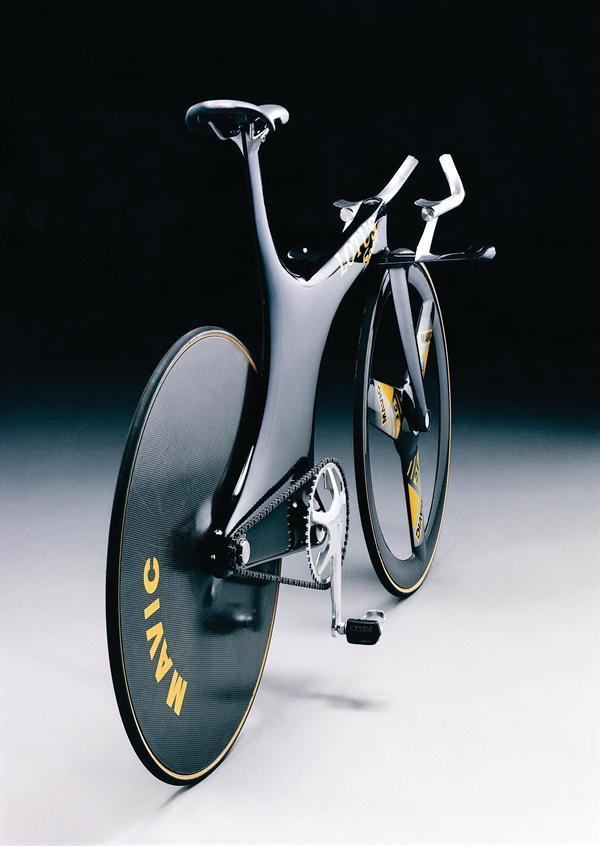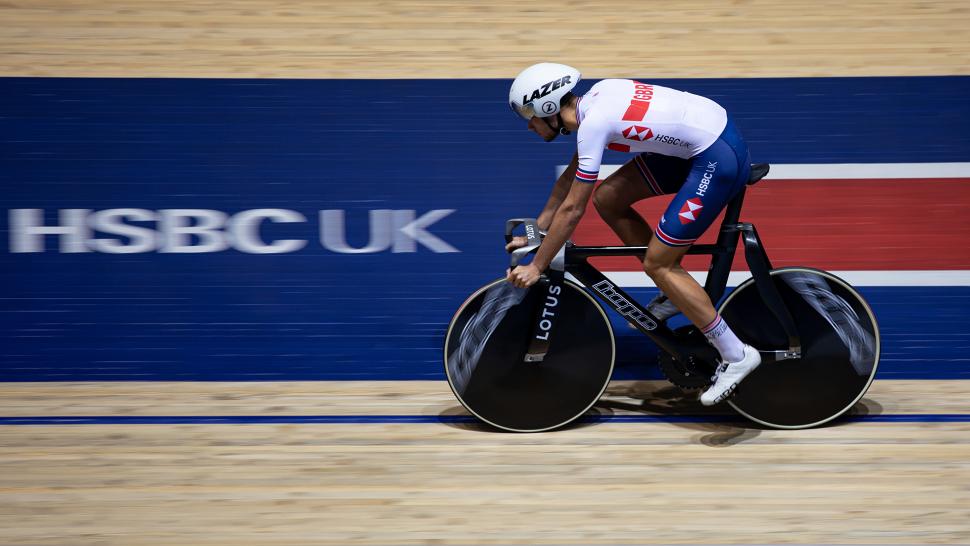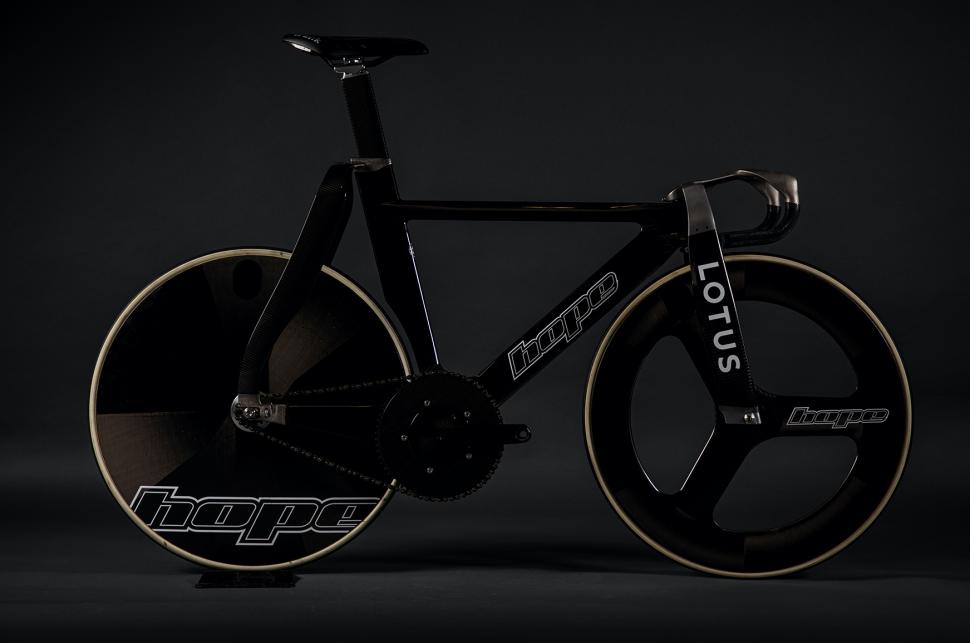- News
- Reviews
- Bikes
- Accessories
- Accessories - misc
- Computer mounts
- Bags
- Bar ends
- Bike bags & cases
- Bottle cages
- Bottles
- Cameras
- Car racks
- Child seats
- Computers
- Glasses
- GPS units
- Helmets
- Lights - front
- Lights - rear
- Lights - sets
- Locks
- Mirrors
- Mudguards
- Racks
- Pumps & CO2 inflators
- Puncture kits
- Reflectives
- Smart watches
- Stands and racks
- Trailers
- Clothing
- Components
- Bar tape & grips
- Bottom brackets
- Brake & gear cables
- Brake & STI levers
- Brake pads & spares
- Brakes
- Cassettes & freewheels
- Chains
- Chainsets & chainrings
- Derailleurs - front
- Derailleurs - rear
- Forks
- Gear levers & shifters
- Groupsets
- Handlebars & extensions
- Headsets
- Hubs
- Inner tubes
- Pedals
- Quick releases & skewers
- Saddles
- Seatposts
- Stems
- Wheels
- Tyres
- Health, fitness and nutrition
- Tools and workshop
- Miscellaneous
- Cross country mountain bikes
- Tubeless valves
- Buyers Guides
- Features
- Forum
- Recommends
- Podcast
TECH NEWS
 Chris Boardman's Lotus Type 108 Olympic Pursuit Bike credit Design Museum
Chris Boardman's Lotus Type 108 Olympic Pursuit Bike credit Design MuseumBike at bedtime: take a look at Chris Boardman’s Olympic-winning Lotus Type 108 track bike
Main image credit: Design Museum
Chris Boardman set a world record for the 4,000m individual pursuit at the 1992 Barcelona Olympics on the revolutionary Lotus Type 108. Designed by Norfolk-based Mike Burrows, the Type 108 was then modified and perfected through wind tunnel testing conducted by the Lotus aerodynamics specialist Richard Hill.
The frame of the Type 108, also known as the LotusSport Pursuit Bicycle, is a carbon composite monocoque that uses advanced aerofoil cross-sections, with the frame itself acting as a ‘wing sail’.
Boardman caught World Champion Jens Lehmann in the final of the 1992 Olympics, having already set a world record of 4 minutes 24.496 seconds in the quarter-finals on the cutting-edge aero frame.
A total of 15 Type 108s were built, including one prototype in 1991 and three frames for use in the Olympic Games.
The road-going version was the Lotus 110, on which Boardman rode to victory in 1994’s Tour de France prologue to clinch the yellow jersey. Here’s our review on the Lotus 110: The Story of a Bike book, if you’re interested in learning about the bike’s fascinating backstory.
“Boardman’s famous ‘Superman’ riding position was about creating an airflow channel between the rider and the bike frame, minimising interactions,” explains Lotus’ chief aerodynamicist Hill.
However this monocoque design was banned in professional cycling following the UCI’s Lugano Charter of 1996, and so with the updated regulations, Lotus has since shifted its focus towards getting the rider and the bike to positively interact with each other with its new track bike developed for this year’s Team GB riders.
“In this way they can benefit each other and cause each to lower the drag of the other,” explains Hill. “We achieve that by careful manipulation of the interference between the two.”
Hill was heavily involved in optimising the aerodynamic performance of the new Lotus Olympic track bike the Team GB riders are using in Tokyo at the Izu Velodrome this upcoming week.
Hill explained how aerodynamics have moved on in the years since he worked on the Type 108 in an interview on Lotus’ site: “Back then it was simply about developing an aerodynamic bike that would go fast.
“But really there are two separate elements – the bike and the rider – which come together as one to move through the air. That was the approach we took with the new bike.
“Put simply, since 1992 we have learned how to use the bike’s design to make the rider more aerodynamic, and also vice-versa.
“What’s improved is our understanding of how to get a bike and its rider round the track together in the fastest possible time.”
Find out more about over here about Team GB’s Tokyo Olympic track bike manufactured jointly by Lotus and Hope Technology, with Renishaw contributing 3D printed titanium parts.
Anna has been hooked on bikes ever since her youthful beginnings at Hillingdon Cycle Circuit. As an avid road and track racer, she reached the heady heights of a ProCyclingStats profile before leaving for university. Having now completed an MA in Multimedia Journalism, she’s hoping to add some (more successful) results. Although her greatest wish is for the broader acceptance of wearing funky cycling socks over the top of leg warmers.
Latest Comments
- chrisonabike 51 min 31 sec ago
I don't have them to hand but IIRC Dutch cycling figures and some slicing and dicing plus analysis are available. Like our own figures it's worth...
- whosatthewheel 1 hour 13 min ago
It's not only you. The problem with the sort of rural shared paths as pictured is that dog owners bring their dogs there precisely to be able to...
- brooksby 1 hour 23 min ago
True. Except that the UberdeliverJust Eat riders *arent* employees. Just independent contractors who happen to be on call to JystDeliverUberEat...
- Steve K 1 hour 29 min ago
You may not be the first person to have made that joke 😀 (But, yes, she is.)
- Smoggysteve 1 hour 30 min ago
No, it's not. I can look at Garmin, I can look at what Garmin says on tbe Garmin app along side weighted average. And I can see what Strava says...
- Bright Strider 1 hour 52 min ago
The cyclops junctions in Cambridge work well. ...
- David9694 2 hours 46 min ago
Teen boy arrested after flipping car in countryside near Swindon...
- gucci_slipperz_ 3 hours 52 min ago
I would be curious to see how these compare to the Elite Wheels lineup. Currently I have some LB wheels but was looking into other options for fun...
- Eton Rifle 4 hours 29 min ago
McDonald's and an Uber. Sorted.
- David9694 6 hours 47 min ago
imagine deciding to put all this energy into trying to shunt a problem around without any prospect of solving it. ...



Add new comment
3 comments
I don't think I'll ever tire of seeing that Lotus 108.
Big fan of the new Hope Lotus bike too.. I think it would be really interesting to ride one.
Keep training then Pete, Ed Clancy has got to be close to retirement which will leave a space in the team pursuit 😀. Like you I could look at that old Lotus all day, I have seen a TT version in the national cycle museum in Llandrindod Wells, worth a look if you are ever in the area (nice cafe on the side of the lake just behind the museum too)
Just read that Ed has retired, what a shame, the end of an era, a very underrated and unassuming rider, all the best with whatever you do next Ed (in the very unlikely event that you are actually reading this).